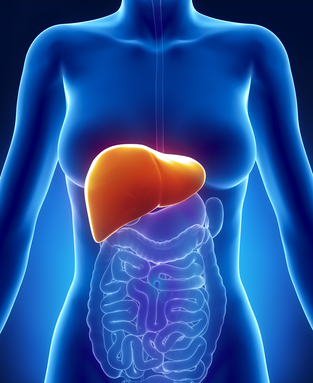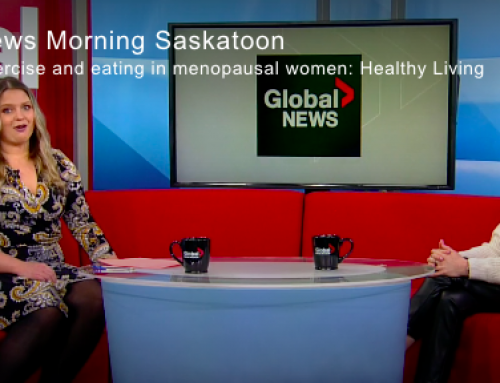Listen to Your Body
This article is dedicated to helping you better understand and know your body. The more we learn about ourselves the easier it is to recognize patterns of health and unease and know when to seek help. I was a very little girl when my grandfather Melvin passed but I have a very clear memory of him sitting at the kitchen table coughing, coughing and coughing. My grandmother was telling him he needed to see a doctor and he couldn’t continue putting it off. Well, he put off that doctor’s visit for long enough that by the time they discovered what was going on his cancer was at an advanced stage. Now, that’s an extreme case, but a very pertinent example in my life of the consequences of not recognizing important signs and symptoms.
Now as a warning; learning the signs and symptoms of disease does often lead to the psychological process of believing you’ve got every symptom and disease in the book (as any student of the medical arts will attest to). The goal with this blog is to empower you the reader with information about the way your body works, the interrelationships between systems, structures and function. I hope you enjoy learning and find yourself connecting with your health at new levels of awareness.
What is the Liver?
We’ll start with the liver .The Liver is an incredible organ and one whose function we couldn’t live without. It is located beneath your lower sternum and right ribs. It is encased and protected by the right ribs (front and back). The liver is one of the largest organs in the body covering 60% of the space below your diaphragm. My teacher and the founder of the Canadian College of Osteopathy Phillipe Druelle says, “We are like our livers. They are mirrors of our metabolism.”
Functionally (or physiologically) the liver’s work is all about metabolism, storage, detoxification, and processing. The liver stores vitamin A, B12, D, E, K, iron, and copper and where vitamin D is made into an active and useable form. Where all of the nutrients and toxins from everything you ingest are processed. Where bile is created, stored and secreted to breakdown fats in the food you eat. Where carbohydrates, fats and proteins are metabolized. Also where glucose (your body’s fuel) is stored and then mobilized when needed. It’s a complex organ that is often called the ‘Commander’ of the digestive system. I think that the intimate links between the digestive system and the brain also makes it the ‘Commander’ of the brain and therefore neural and emotional function. So, it’s important!!!
The diaphragm is a very thin, yet very strong muscle that runs horizontally in between your thorax (upper part of your torso) and the abdomen (lower part of your torso). It’s interesting to note that there are not a lot of horizontal structures in the body – so the ones that are there play very special roles. The liver basically hangs off of the diaphragm through its ligaments (the coronary, and triangular) and is also held in place by an area where there is negative pressure ‘sucking’ the liver up against the diaphragm (called the bare area). The sympathetic nerves that drive the function of your liver come from vertebra T5–T9 (that’s the middle part of your back between the shoulder blades) and the parasympathetics are from the Vagus nerve – this nerve travels all the way from the cranium down to the liver. The blood that supplies the nutrients and oxygen that support liver function and health come from the solar plexus – that area about 4 finger widths above your belly button and below your sternum.
What Impact Does the Liver Have on its Neighbours?
Imagine for a moment, a great big bag of blood (your liver is predominantly blood) that can weigh up to five pounds hanging off of your diaphragm. Now, imagine carrying around a five pound bag on your arm all day – that’s heavy! If the liver’s position under the diaphragm is out of regularity, or it’s restricted in its movement imagine the stress that will place on the diaphragm. Everything in the body moves, and when it doesn’t move or is restricted in movement other parts of the body have to pick up the slack. They have to adapt to the restricted part – which is often why we find symptoms in areas of the body that seem so distant from the real problem.
The liver has the potential to impact all of its neighbours. Imagine the liver as being that house on the street that has really rowdy parties – those rowdy parties will be heard and have an effect on all the neighbours – sometimes even the whole neighbourhood. It’s important to know where organs and other structures are located within the neighbourhood of the body – that way when someone is having a rowdy party and a neighbour is complaining we can better understand the mechanism that led the neighbour to make the complaint (symptom). So who are these lucky neighbours? The stomach, esophagus, duodenum, small intestine, large intestine, heart and pericardium, right lung and the right kidney. And the neighbourhood? It includes the right temporal, neck and shoulder, the side of the knee, even the bottom of the foot… gosh the whole body is the neighbourhood. Structurally an impairment to the free movement of the liver within its home can have really far reaching effects.
How do our livers function and free mobility become restricted? Imagine for a moment walking across an icy street, suddenly your feet slip out from under you and boom – you’ve fallen and landed right on your behind. Oooooohhhh that hurts the tail bone. You went down with such force and when you hit the ground it stopped you hard. There’s no give to the icy pavement. Now take your mind inside your body – inside your liver and imagine that fall again – this time as the velocity of your weight is moving down towards the ground and your bony tailbone stops at the brunt landing – the liver and all of your internal organs they keep going – they get a bit of a bounce – almost like a bungee jump – once they hit the end of the ropes elasticity it rebounds like a trampoline. These kind of injuries can create patterns of trauma in the liver tissue and the fascias that surround it. What other kinds of things can hurt the liver? Seat belt injuries, blunt and high velocity trauma, toxic exposure, toxicity in our food and drinks, diseases that cause inflammation, even emotional trauma especially unexpressed anger or frustration can affect our liver function and free motion.”
What Symptoms Indicate the Need for a Liver Check Up?
Some of the signs and symptoms I commonly see that indicate a need to check the liver include:
- Difficulty digesting wine, chocolate, acidic food, fatty and fried food
- Nervous depression
- Extreme fatigue
- Poor sleep patterns
- Oily acne prone skin
- Scalp irritability
- Red, swollen face
- Right shoulder immobility/pain (including frozen shoulder)
- Red eyes, light shadows around the eyes
- Enlarged blood vessels on the nose
- Longitudinal grooves in the nail beds
- Decreased immunity
- Muscle cramps
- Repeated sprains/strains
- Dark urine and a white tongue
- The nine liver dwarves (as termed by Dr. Jonn Matsen, ND): “Burpy, Bloaty, Gassy, Gaspy, Spacey, Achy, Itchy, Bitchy, Sluggy”
 As a manual therapist it’s my job to ensure that the liver and all of its neighbours are positioned correctly, and have freedom of movement within their physiological parameters so that they can do their functional work optimally. When I work with the body I’m not looking for disease but rather the health, and it is through engaging the health that is expressing itself that together we support every organ and tissue in finding its home and freedom of movement so that its function can normalize.
As a manual therapist it’s my job to ensure that the liver and all of its neighbours are positioned correctly, and have freedom of movement within their physiological parameters so that they can do their functional work optimally. When I work with the body I’m not looking for disease but rather the health, and it is through engaging the health that is expressing itself that together we support every organ and tissue in finding its home and freedom of movement so that its function can normalize.
I highly recommend after reading this you go to Google and do an Image search for the liver. Take a look at it. Look at where it is from different viewpoints, what it looks like, and what neighbours are around it. Get to know this important part of your health! I hope this article has given you a deeper glimpse into yourself, and brought you to interface your health in new and wondrous ways.
Be Well.






